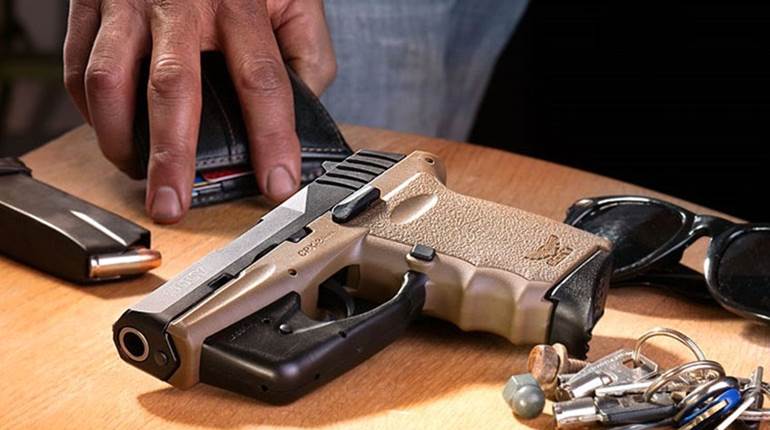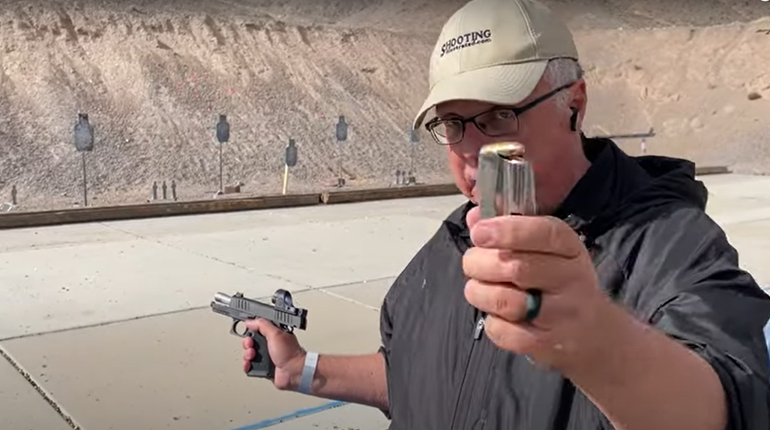
As America’s first “light machine gun,” the Model 1909 Benet-Mercie traded sustained fire for portability, fulfilling an important role, but it’s unreliability led troops to nickname it the “daylight gun.”
At the dawn of the 20th century, the U.S. military stayed abreast of other industrialized nations in the development and procurement of machine guns. In 1895, the United States adopted its first “true” machine gun, the Model 1895, invented by the legendary and prolific arms designer John M. Browning. Almost a decade later, the U.S. adopted the latest version of the Maxim machine gun as the Model of 1904. The air-cooled Model 1895 and the water-cooled Model 1904 were both belt-fed machine guns capable of high rates of sustained fire. The major drawback of both designs, however, was excessive weight; approximately 91 pounds (including tripod) for the Model 1895 and more than 152 pounds (including full water jacket and tripod) for the Model 1904. While these guns played an important role in combat, such weight obviously restricted their battlefield mobility. An automatic arm with adequate firepower that was easily transportable would fill the void between the effective—but heavy and cumbersome—belt-fed machine gun and the bolt-action service rifle.
To this end, the U.S. Army Ordnance Dept. evaluated a number of automatic designs and favored one from France’s Hotchkiss. It was perfected by two Hotchkiss employees, an American arms engineer named Laurence Benet and the company’s chief experimental engineer, Henri Mercie. The gun, termed the “Hotchkiss Portative,” had recently been adopted by the French in 8 mm Lebel and by the British in .303 British. The cartridges were fed into the action by 30-round metal strips, and the rate of fire was approximately 400 rounds per minute. The gun was air-cooled, gas-operated and weighed about 30 pounds, which was only a fraction of the weight of either machine gun then in U.S. military service. The Hotchkiss was 48.5-inches long with a 25-inch barrel, had only 25 major components, and a thin metal bipod was attached to the barrel near the muzzle. Shot-out or overheated barrels could be quickly changed—a novel feature for the time.
The United States adopted it as the “Model of 1909 Benet-Mercie Machine Rifle.” Chambered for the standard U.S. .30 Springfield (.30-’06 Sprg.) cartridge, the Model 1909 Benet-Mercie was also equipped with the telescopic Model of 1908 Warner & Swasey “Musket Sight” of the same pattern used on M1903 Springfield sniper rifles of the period. The new arm was put into production at the government-owned and -operated Springfield Armory and by Colt Patent Firearms Mfg. Co. The two entities manufactured a combined total of 670 Model 1909 Benet-Mercie machine guns.
The gun received its baptism of fire with the U.S. Army during the 1916 campaign in Mexico to quell bandit raids on border towns, especially by the well-known “Pancho” Villa. While the gun provided valuable service on some occasions, the Benet-Mercie displayed a troublesome propensity to break parts, especially extractors and firing pins, which rendered the machine rifle unusable until it could be disassembled and the broken parts replaced. Unfortunately, the gun proved difficult to disassemble and reassemble, especially when engaged in night combat operations. In addition to the difficulty soldiers experienced in taking the gun down and putting it back together, they also discovered that the feed strips could be easily inserted upside down, especially while loading in the dark. The gun was inoperable until the feed strips could be taken out and reinserted properly. The Benet-Mercie acquired the derisive nickname “daylight gun,” since some felt it was not usable at night. In all fairness, however, it is probable that at least some of the problems experienced with the gun in Mexico were due to inadequate training and general unfamiliarity with it. While the Benet-Mercie proved to be marginally useful on occasions, the above-enumerated problems made it clear that it was, by no means, an ideal machine gun.
When the United States entered World War I the following year, the standard U.S. Army machine guns were the Model 1904 Maxim and the Model 1909 Benet-Mercie, and both were in short supply. The first U.S. Army machine gun units carried their Benet-Mercies with them when they deployed to France. All are believed, however, to have been used for training purposes only, and none are known to have been used in combat during the war. While the excellent Lewis light machine gun was available at the time, the vast majority of the Doughboys were equipped with French automatic arms, especially Model 1914 Hotchkiss heavy machine guns and Model 1915 Chauchat automatic rifles. While the Hotchkiss proved to be useful, the Chauchat made the Benet-Mercie look utterly reliable by comparison. The Chauchat was substantially lighter than the Benet-Mercie and was more of an automatic rifle, and the Model 1909 was actually a light machine gun despite its “Machine Rifle” nomenclature.
Eventually, the French Hotchkiss heavy machine gun was replaced by the water-cooled, belt-fed U.S. Model 1917 Browning water-cooled machine gun, and the woeful Chauchat was superseded by the superb U.S. Model 1918 Browning Automatic Rifle (BAR). Neither of these excellent arms, however, saw service until very late in the war.
The Chauchat notwithstanding, it is fortunate that our troops did not have to go into combat against the Germans with the “daylight gun.” A well-known small arms authority of the day, Edward C. Crossman, noted the following: “I remember one cold day how a government inspector and I lugged one of the government Benet-Mercie machine guns out of the great Colt factory where they were made and set it up in a testing yard. Although the gun was in the hands of a most skilled man, a man there on purpose to inspect machine guns—that gun broke six parts in the first 20 shots. It broke extractors and firing pins as fast as we could put them in—because the weather was cold, and the chilled parts were brittle. Imagine tumbling out in the chill dawn of a winter’s day with the Huns coming over No Man’s Land, and having your machine gun break apart the first rattle of shots!”
The Benet-Mercie was replaced in U.S. service (albeit for training use) by other arms as they became available, including the Model 1918 Browning Automatic Rifle and Model 1917 Lewis light machine gun. By the time of the Armistice, the Model 1909 Benet-Mercie was dropped from Uncle Sam’s inventory and the remaining guns were either destroyed or discarded.
While an obviously flawed design, many rookie American machine gunners honed their skills on the Benet-Mercie before graduating to the automatic arms they would eventually use in combat. For a brief period, the Model 1909 Benet-Mercie was America’s only “light machine gun” and, despite its flaws, it is an interesting design that should be remembered when discussing the history of U.S. military small arms.




































